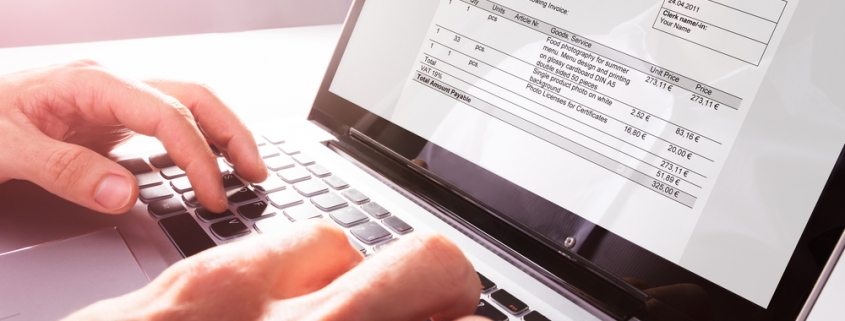What is Spot Factoring?
Last Updated October 12, 2023
Spot factoring, also known as single invoice factoring, is a way for companies to improve cash flow without taking out a loan or selling equity. Spot factoring differs from traditional invoice factoring because it is primarily used to factor a single large invoice, rather than a set of invoices. It tends to be more expensive than traditional factoring, but it allows a company to get paid on its large individual invoice immediately, rather than waiting for its customer to pay.
What is Spot Factoring?
Spot factoring is the factoring of a single invoice, rather than a set of invoices. Single invoice factoring is primarily used when a business has a very large unpaid invoice that it would like to receive payment on sooner rather than later.
The best way to explain how spot factoring works is that it’s almost like having a collection agency for your past due invoices. If you require immediate payment by your customers, and the invoice is reasonably large, spot factoring might be a good option.
In these circumstances, you will take this larger unpaid invoice, generally $50,000 or more, and send it to the spot factoring company so that they can collect on it. Together you will agree upon factoring rates, fees, and how you will ultimately pay the spot factoring company. Then, the spot factoring company will pay a portion of the invoice directly to you.
Having this advance is beneficial because it can help you cover some immediate costs, making spot factoring an excellent way to collect delinquent invoices. It’s also a good option if invoices don’t seem to be moving and yet your business expenses are adding up. Although all rates may vary, the advance paid by the spot factoring company is usually between 70 to 80 percent of the total invoice.
After you settle the advance, the spot factoring company collects on the remainder of the invoice, which in turn covers the rest of their fees. You might find value in spot factoring for your business because the large invoice becomes the responsibility of the spot factoring company, and you can access a portion of the funds right away.
Advantages and Disadvantages of Spot Factoring
When researching financing options for your business, it is important to consider the pros and cons associated with each. Below we overview the benefits and challenges of single invoice factoring to help you make the best decision for your company.
| Advantages of Spot Factoring | Disadvantages of Spot Factoring |
|---|---|
| You can receive a cash advance on a large unpaid invoice without having to wait for your customer to pay. | You need a large enough invoice to justify single invoice factoring. |
| You can use your cash advance to fund your business. For example, you can pay down debt, make payroll, take on new customers, and/or purchase inventory. | Spot factoring rates can be higher than traditional invoice factoring rates. |
| You do not have to enter into a long-term agreement to receive funding. | If you need funding immediately, setting up a spot factoring agreement may take too long. |
Benefits of Spot Factoring
If you are considering using a spot factoring company, the primary benefit is that you get a sizable monetary advance on your unpaid invoice. This cash can then be used to fulfill business needs without having to wait for payment and can allow you to focus your attention on your business operations and growth, rather than on debt collection.
In some instances, companies use single invoice factoring to help them through rough financial times, as the advance amount can help them stay afloat and pay their staff during a lull in sales.
Spot factoring is also beneficial for businesses because it allows them to sell off either one of several larger invoices without entering into a long-term agreement. Rather than potentially negatively impacting your business relationship with a client, you can seek assistance from a spot factoring company to collect delinquent funds on your behalf.
Challenges with Spot Factoring
There are a few challenges for companies hiring spot factoring organizations. The first challenge is that they need to have a large enough invoice to justify getting a spot factoring company involved in the first place. This monetary prerequisite can make it difficult for smaller companies to explain or even have the option to hire a spot factoring organization.
The second challenge is that companies that hire spot factoring businesses stand to lose a portion of their invoice. The total amount can vary depending on the spot factoring company that you hire. These crucial details are still clearly explained in the agreement process before signing over any company invoices.
It’s essential to set up a fair contract, vetted by your attorney, before getting involved with a spot factoring company. It can also take up to a week to establish an agreement with a spot factoring company, so if you are in a position in need of upfront funding immediately, you should consider other options.
The Spot Factoring Process: Step by Step
Many companies look at spot factoring as a last resort for large invoices that are delinquent. If you simply can’t collect from your customers, it’s well worth the fees to send it to a spot factoring company.
- First, you need to determine if hiring a spot factoring company will be beneficial to you in the first place. Most companies take this opportunity to consult with their financial advisors and in-house team to determine the best course of action.
- Once you decide to move forward with a spot factoring company as the best option, it’s a good idea to shop around. Once you’ve settled on a choice, the company will work with you to draw up a factoring contract that spells out precisely what your advance will be, what fees the company will take, and any legalities that you need to iron out.
- Collect the larger invoices you want to send to the spot factoring company and collect the advance. After that, the invoice is out of your hands, and the spot factoring company will pursue the balance with the delinquent accounts.
From a diplomatic perspective, spot factoring can be a very effective way to deal with profitable customers who pay late. Since they’re not being contacted by your company specifically, you won’t risk souring your relationship with them.
How Spot Factoring Differs From Regular Transactions
Based on your clients’ needs, you will invoice them weekly, monthly, or on other routine bases in typical business transactions. Spot factoring differs from this because you hire the company to handle a single invoice from your client as a one-time purchase.
When hiring a spot factoring company, the invoices are usually already delinquent or late. They also tend to be much larger amounts than traditional invoices, so hiring a spot factoring company can help get access to a portion of those funds immediately rather than wait.
Additionally, once you agree with a spot factoring company, they become wholly responsible for that invoice, meaning that if they cannot get the client to pay, they must pay you out the remaining balance. Terms can vary, however, so be sure to read your contract thoroughly.
Does altLINE Do Spot Invoice Factoring?
At this time, altLINE does not offer spot invoice factoring; instead, we provide factoring through a bank in which you can receive a factoring line of credit that’s easier to get approval for than a bank loan and creates a more sustainable means for growth than spot factoring. According to Angelo Standriff, a business development representative here at altLINE, “Using a factoring facility with regularity allows you to obtain lower rates, build history with your factor, and be best prepared for an exponential growth period requiring working capital.”
If you are interested in invoice factoring, fill out altLINE’s form to receive a free quote today or call +1 (205) 607-0811 to speak with a representative!



